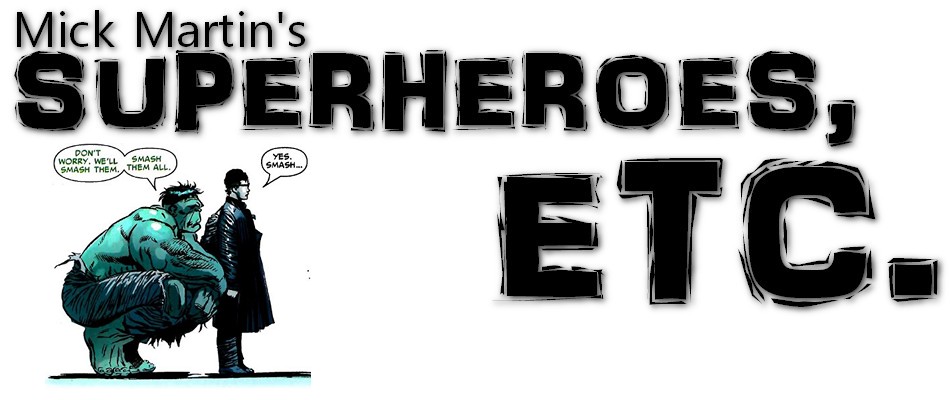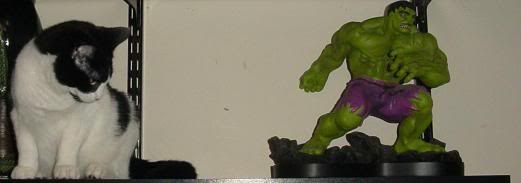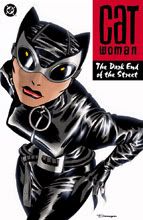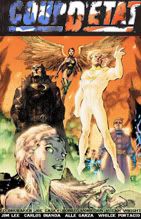 Wild Cards, Vol. 1
Wild Cards, Vol. 1Various Authors
Edited By George R. R. Martin
The same year Watchmen and The Dark Knight Returns rocked the comics industry, the mosaic novel Wild Cards was released, edited by sci-fi/fantasy author George R. R. Martin, beginning a series that has to date spawned fifteen other novels with the latest - Wild Cards: Deuces Down - released in 2002. The first novel attempts, like Watchmen, to lend a more realistic foundation to superheroes and their villainous counterparts, using the more volatile events from the end of World War II to the end of the 1970's with one sci-fi twist: an alien virus released over New York City that kills most it infects, deforms others, and grants a few the mythic powers comic books’ superheroes and supervillains enjoy. The random aspect of the virus is the source of the series’ title: the deformed are given the name “Jokers” by society while their more super counterparts are dubbed “Aces” (Jokers often have powers of their own, but they’re either useless or their deformities are deemed to outweigh whatever use their powers might have). Each of the novel’s stories is written by a different author, with brief interludes scribed by Martin himself, as well as an Appendices and a black-and-white gallery at the end of the novel illustrated by Mike Zeck.
The quality of the stories is regrettably inconsistent, and even more regrettably the very first story - “Thirty Minutes Over Broadway!” by Howard Waldrop - is the least impressive of the book. Adding insult to injury, since all the stories share the same narrative universe and “Thirty Minutes . . .” chronicles, of all the events in the novel, the most essential facts necessary to understand the rest of the story, skipping over it just ain’t an option. Waldrop seems to spend most of his time impressing us with his knowledge of post-WW II history and aviation (the latter of which he never explains to us poor bastards who’ve never had a spot in an Iron Eagle flick), and much of his prose seems downright lazy. The final confrontation between Jetboy and Dr. Tod - the event that releases the aforementioned virus on unsuspecting New Yorkers - has the most boring language and pacing I’ve read in an action scene.
As mentioned earlier, the first story initially caused me to go no further into the novel and to shove it behind more well-loved volumes in my shelves, but luckily a few apartment moves knocked the book back into my view and my curiosity got the better of my skepticism. The second story - Roger Zelazny’s “The Sleeper” - more than made up for the preceding yawnfest.
“Thirty Minutes . . .” ends at the moment of the virus’ release, while “The Sleeper” begins with the horrific aftermath, seen through the eyes of young Croyd Crenson. Croyd endures perhaps the most unique transformation of Wild Cards's Aces and Jokers. He hibernates for weeks or months, each time awaking with a new body and new powers. Desperate to support his family and to find out the secrets of his affliction, Croyd’s actions are rarely heroic, much less superheroic. Still, with the “The Sleeper” Zelazny painfully captures a dichotomy integral to superhero icons such as Batman and Spider-Man: the isolation of the superhero and the simultaneous crushing sense of guilt, shame, and responsibility to those from whom the superhero is isolated. When Croyd pops up for cameos later in the novel, you can’t help but both lament the knowledge that the years haven’t managed to cure him, and simultaneously feel relief that he hasn’t yet met an unkind end.
One of the strengths of “The Sleeper” punctuates a weakness in the rest of the novel. Zelazny’s contribution is arguably the only story that stands on its own merits and perhaps could be read, appreciated, and enjoyed without ever reading another Wild Cards tale, whereas the rest of the stories stand or fall based, in part, on the rest of the text.
Wild Cards’s mosaic aspect is accomplished with the merging of Martin and Co.’s superhero mythos with real-world events. Unlike Watchmen, which among other things gave readers a look at what the real world might look like if costumed crimefighters existed, the authors of Wild Cards use real history to justify the Super. For example, the infamous McCarthy trials are one of the more pivotal moments in the history of the first novel and the events span two stories: “Witness” by Walter Jon Williams and “Degradation Rites” by Melinda M. Snodgrass. Rather than showing these events to have unfolded with any notable difference, the authors use it to justify the subsequent spread of Aces who wear costumes, masks, and harbor secret identities in fear of the same witch-hunts suspected communists suffered in the real world. Likewise in “Transfigurations” by Victor Milan, super powers explain the lure of the rock star Lizard King (yep, it’s pretty much who you’re thinking, though with a different name).
"Witness” and “Degradation Rites” are both, no surprise, quite tragic stories, “Witness” being the only story in the novel told from a first-person narrative. It follows the rise and fall of the first bonafide superhero team, The Four Aces, told from the perspective of Jack Braun, a.k.a. Golden Boy. “Degradation Rites” focuses instead on Blythe van Renssaeler, a.k.a. Brain Trust, her relationship with the alien Doctor Tachyon (whose arrival on Earth precipitates the release of the Wild Card virus) and her fate at the hands of the House Committee on Un-American Activities. Both stories are well-written and compelling, but after “Witness” the following story seems unnecessary. As far as the overall narrative is concerned, “Degradation Rites” follows the same timeline and gives us the same events of “Witness”. The only difference is that “Degradation Rites” is the first of the stories to deal with any kind of romantic relationships between the principle characters.
Which brings me to one of the more regrettable things about Wild Cards. At the risk of seeming a little too P.C., it seems to me that one of the benefits of dealing with superheroes in prose rather than the traditional comic book format is that there’s more of an opportunity to handle female characters with a little more respect. After all, there are few pictures, and therefore no way for Power-Girl-sized boobs to show up on every other page.
Regardless, the women of Wild Cards are almost always sex objects, and secondary to the men. Brain Trust is perhaps the least mentioned of The Four Aces in “Witness” and her most memorable scene in the story involves her storming out of an apartment after an unwelcome advance by Golden Boy. She gets a bit more spotlight in “Degradation Rites” but most of the story is told from Doctor Tachyon’s point of view, focusing on their relationship. The main character of “The Long, Dark Night of Fortunato”, a glorified pimp, receives his powers from sex with his “Geisha.” The character Succubus from “Strings” absorbs the sexual attraction from men to unleash her powers, and her fate at the end of the story makes a certain infamous scene from Identity Crisis #2 pale in comparison. The only weighty female character to escape either sex object or secondary status is Bagabond from “Down Deep” and unfortunately it’s one of the least enjoyable stories in the book.
Feminist ideology aside, Wild Cards is, for the most part, a great read. “Shell Games” by George R. R. Martin was the story that convinced me how in love I’d become with the overall story, perhaps because it’s the first of the novel’s installments to end on an up-note. It also introduces readers to one of the first comic-book-correct heroes (i.e., a crimefighter with a secret identity): the perfectly named, Great and Powerful Turtle. Other highlights include “The Long, Dark Night of Fortunato” an absolutely disturbing story and one of the few to mix the more sci-fi elements with a bit of magic, and “Strings” that gives us to the villain Puppetman (a good story despite the fact that the surprise twist ain’t that much of a surprise). Unfortunately, the novel ends with “Comes A Hunter,” a kind of Rambo-meets-Batman-meets-Green-Arrow with a very generic vengeance-minded action move feel.
Overall, I was pleased with my first dive into the world of superhero prose, and I’m looking forward to sampling the rest of the Wild Cards series.



 Catwoman: The Dark End of the Street
Catwoman: The Dark End of the Street Cheat
Cheat Coup D'etat
Coup D'etat